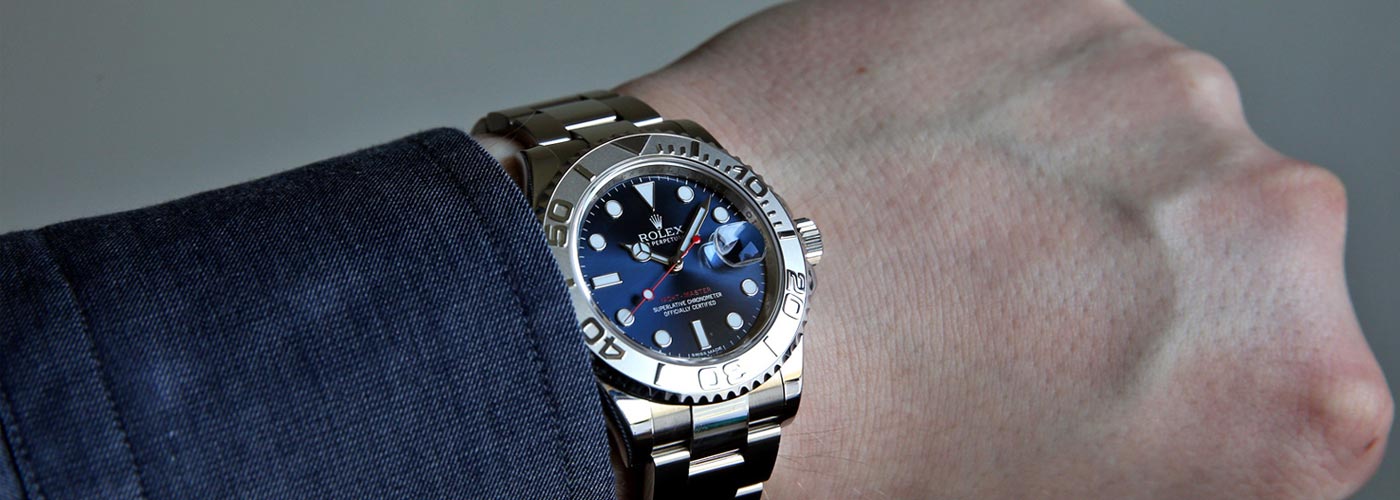Most people don’t give a second thought to the question, “what hand does a watch go on?” Whether you choose your right or left wrist, it doesn’t matter as long as it’s comfortable to wear. However, it’s important for people who pay attention to detail and the unwritten fashion rules.
Historically, many people have worn their watch on the left wrist or non-dominant hand. Women didn’t wear wristwatches before 1900 because pocket watches were a popular accessory. However, most soldiers opted for this bulky timepiece as it was concealed under a protective leather pouch, typically worn around the officer’s left wrist. Perhaps this could explain why the answer to what side do men wear watches is usually on the left hand.
So, are you wondering which hand to wear watch and why? Keep reading to find out!
The Dominant Hand
If you’re wondering why ladies wear watch in right hand compared to men who prefer the left, there is no standardized rule. Generally speaking, a watch is worn on your non-dominant hand. For example, right-handed people should wear a watch on their left and vice versa. Simply put, nobody wants to misalign their actions and damage their watch accidentally.
We tend to use our dominant hands, whether writing, eating, or drinking. If you wear a watch on your less dominant hand, you can use the other hand for something more critical while still being able to tell time. As a bonus, your watch is safer because you are more stable in the activity you’re engaging with and, thus, further from potential harm.
But certain traditions and underlying theories have developed over time on which hand to wear watch.
Why is the Left Hand a Preference?
Since most individuals are right-handed, it makes sense if your parents instructed you that your left wrist is for watches. When watches were first developed, it was likely when deciding which hand to wear watch on – most individuals chose their less dominant hand. As is often the case, the custom became the masses and has been perpetuated through generations.
But, the fact that most clocks are made for right-handed people is another source for this suggestion. To adjust the timepiece, you’ll require your right hand as the crown is also on the right. When worn on your right hand, the crown becomes inaccessible without reaching over the watch case.
Unfortunately, this is no longer beneficial as you won’t be setting or adjusting time. For this reason, let’s look at the psychology of wearing watch in right hand versus the left.
Culture and Psychology Behind Which Wrist
Some eastern societies expect males to wear wristwatches on their left hand and ladies on the right. When explaining what side do women wear watch, the left-brain theory is considered. According to this, the right half of the human brain is more feminine as it is related to emotions and creativity.
On the other hand, when discussing what wrist does a man wear a watch, the left side is more dominant. This is because the left side of our brains is more masculine. After all, it is associated with logic and problem-solving. These gender biases motivate wearers to sport watches on the wrist that corresponds to their personality.
Some people also suggest the left side of the brain controls most of our daily activities. This could be interpreted as a sign of spacial and reasoning abilities among those who prefer their left wrist. On the contrary, some associate people wearing watches on their left wrists as more extroverted and spontaneous. But this theory is not universally accepted.
To Conclude
The choice of which wrist to wear a watch on is ultimately yours. However, as a rough guideline, take the considerations mentioned above into account to decide which hand works best for you. Nonetheless, wearing a watch on your less-dominant hand will save wear and tear on your watch while making everyday activities and telling time significantly more straightforward.











